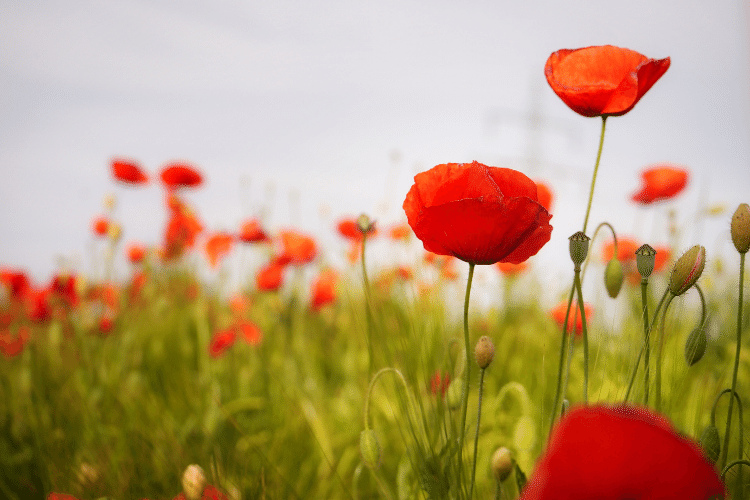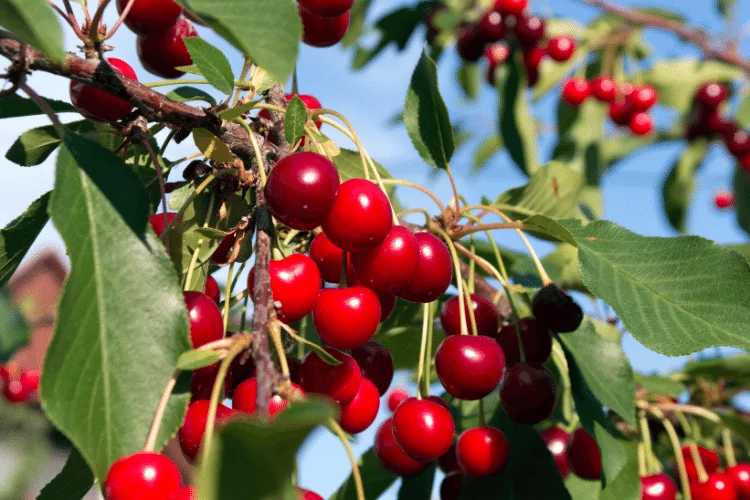Mason Bees are one of the world’s most efficient pollinators. Their furry bodies allow them to transport a lot of pollen all at once.
Because of that, these critters are incredibly beneficial for the ecosystem. They can help plants grow and maintain biodiversity by cross-pollination.
As you can imagine, that means having these bees in your backyard is a good thing. So, if you’re trying to attract these insects, you’ve come to the right place.
In this article, we’ll walk you through some of the best flowering plants for Mason Bees. We’ll also cover what you can do to attract more of these critters to your garden.
Mason Bees Overview
Mason Bees are part of the Megachilidae family. They’re a group of insects with stout, segmented bodies and scissor-like jaws.
They use their powerful mandibles to collect materials for nesting.
These critters typically live in naturally occurring gaps in stone or wood. Yet, sometimes they can take over other insects’ abandoned homes.
Once they find a suitable location, they’ll begin building a nest. They’ll use any materials they can find around them.
That includes dead leaves, sawdust, mud, and clay. That’s where the bees get their name. They use masonry products to construct nests.
Other than that, Mason Bees come in a variety of colors. The majority of the critters are metallic blue or green.
Although, some also have black or rust-red bodies.
Moving on, female Mason Bees have hair-like structures all over their exoskeleton. There are parallel rows of scopa lining the underside of their abdomens.

Mason Bee Pollination Habits
While Mason Bees are excellent pollinators, they don’t fertilize flowers on purpose. Instead, they’ll visit plants in search of nectar and pollen.
These are the two main food sources for a Mason Bee. They’ll need both to grow and carry out various life processes.
When the bees land on a flower, the scopa will brush up against pollen. Then, the pollen will stick to the bees because of electrostatic forces.
Next, Mason Bees will fly off to another flower to continue their meals. At that point, they’ll drop off some of the pollen they collected.
8 Best Flowering Plants for Mason Bees
There are countless types of flowering plants scattered across the world. Although, not all of them will produce nectar.
That means some flowers won’t pull in any Mason Bees. So, to help you out, we’ve compiled a list of eight amazing plants.
All of these should be able to attract the flying critters to your backyard.
1. Purple Coneflowers
One of the best flowering plants for Mason Bees is Purple Coneflowers. They’re excellent sources of pollen and nectar.
Because of that, these flowers can sustain a whole host of insects. That includes butterflies and various bee species.
On top of that, they have exceptionally elegant petals. The soft, purple flowers are stunning and give off a sweet honey scent.
In addition, Purple Coneflowers are resilient. That means you won’t have to put in much effort to keep them alive.
2. Gooseberry Shrubs
Gooseberry shrubs are another type of plant that produces both nectar and pollen. Because of that, they’re ideal for Mason Bees.
Besides that, the florae are stunning. The flowers have fragile reddish-pink petals and woody stems.
This gives them a rustic look that can brighten up any garden.
Other than that, Gooseberry shrubs don’t need a lot of attention. They can survive in full sunlight, with little water.
Although, you may have to prune the plant and feed it fertilizer around springtime.
To top it all off, Gooseberry shrubs produce tart fruit. You can dry them or turn them into jam, for a nice sweet treat.
3. Black-Eyed Susan
Black-Eyed Susans look similar to sunflowers. They have large dark centers with bright, yellow petals.
Although, Black-Eyed Susans are much smaller.
These florae are usually easy to plant and care for. They don’t require much water or fertilization, but they can grow at a speedy rate.
That means you can fill up your garden with these flowers in no time. Plus, they give off a pleasant scent.
They smell like freshly cut grass, with a hint of sweetness.
Other than that, because of Black-Eyed Susans’ shape, the nectar is close to the surface. This makes it much easier for Mason Bees to feed.
4. Poppies
Most of us are familiar with Poppies. They’re tiny flowers with vibrant red petals. The signature crimson shade is perfect for adding a pop of color to any garden.

Unlike most of the other flowers on our list, Poppies don’t produce any nectar. However, they make plenty of pollen.
So, they can still attract a large number of Mason Bees. On top of that, they’re hardy and can withstand all sorts of weather patterns.
For instance, Poppies can tolerate frost. Because of that, if you live in a colder area, these flowers are the way to go.
5. Bee Balm
Bee Balms are stunning flowers that are native to North America. They have beautiful scarlet petals and bright green foliage.
As you can guess by the name, bees absolutely love these flowers. That’s because they produce a lot of pollen and nectar in a short period.
For that reason, bees will gather around these flowers any time they’re in bloom.
Aside from that, Bee Balms are sensationally fragrant. They give off a powerful citrusy scent that adds an air of freshness to any space.
Moving on, Bee Balms can be useful around the house. You can steep the flowers and leaves in hot water to make tea.
This will soothe stomach aches and it tastes good, to boot.
6. Forget Me Not
Forget Me Nots are charming little flowers with papery blue petals and long stems. They can grow in full sun or in the shade.
For that reason, you can plant them almost anywhere.
Even though they don’t bloom for long, they can still attract tons of Mason Bees. That’s because in the few weeks they’re flowering, the plants produce a lot of nectar.
On top of that, the petals are fully open and bend slightly backward. This gives bees easy access to the nectar.
Although, Forget Me Nots do have a couple of special demands. They need plenty of water to grow and may require frequent fertilization.
7. Lilac Bushes
If you’re looking for a colorful display for your garden, then Lilac bushes may be the way to go. These plants are pretty, delicate, and easy to grow.
In addition, each bush can grow many flowers in different shades. The colors can range from a deep purple to a pinkish-white.
This creates a gradient effect that’ll add an element of interest to your garden. Besides that, Lilacs bloom for about six to eight weeks.
That’s a relatively long time for flowers. Because of that, these plants can attract Mason Bees over an extended period.
Plus, Lilacs produce an intoxicating aroma. It’s a mixture between Lavender and wild berries.
8. Cherry Trees
Cherry trees are one of the most popular plants in the USA. We grow them for their tart fruit, and they make excellent wood for various projects.

Yet, they’re also good for attracting bees. That’s because a single Cherry tree can produce hundreds of flowers every spring.
In addition, most of the flowers bloom at the same time. This creates a feeding playground for Mason Bees.
The insects can jump from one flower to the next for weeks.
Tips to Attract More Mason Bees
Now that you know what plants attract Mason Bees, we can move on to a few tips. There are a few other factors you should consider to ensure that the critters visit your garden.
Plant Origin
When choosing plants to attract Mason Bees, it’s best to pick flowers that are native to your area. For starters, they’re suited to grow rapidly in that environment.
That means you’ll likely have more blooming flowers come springtime. Other than that, you won’t have to put in much effort to keep the plants alive.
Plant Variety
Different flowers bloom at various times throughout the year. Some of them will blossom at the beginning of spring while others will open up towards the end of summer.
So, when choosing flowers for Mason Bees, it’s best to plant a wide variety of florae. That way, you’ll have flowers for most of the year.
This means the bees will frequent your garden to get their fill of nectar.
Plant Hybrids
Over the years, we’ve hybridized many plants for a few different reasons. For example, we cross two flowers together to create a more resilient plant.
While this will make gardening easier, it’s not great for Mason Bees.
Hybrid plants tend to produce less nectar and pollen. So, it’s best to grow old-fashioned flowers instead.
Wrapping Up
If you’re looking for the best flowering plants for Mason Bees, there are countless options. Some of the most notable ones include Purple Coneflowers, Poppies, and Bee Balm.
Other than that, Gooseberry shrubs, Forget Me Nots, and Lilacs are excellent choices.
Finally, when choosing a plant, there are a few factors you should consider. For starters, ensure that the flower is native to your area.
Other than that, plant a wide variety of flowers and avoid plant hybrids.
- Does Bleach Kill Bees? - April 23, 2024
- How Do I Get Rid of Ants Without Harming Bees? - April 16, 2024
- Do Bug Zappers Kill Bees? Completely Explained - April 9, 2024
